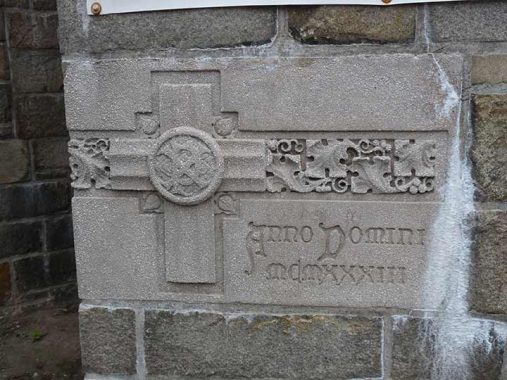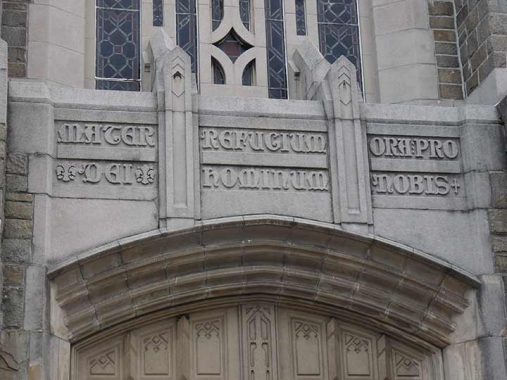
As a kid, I was rather more holy than I am now. For example, I served as an altar boy eons ago at my home parish in Bay Ridge, St. Anselm. I joined the corps in 1967 which, it turned out, was a pivotal period in the Catholic Church. The sweeping changes enacted by the Vatican II conference (1962-1965) were being implemented. A couple of the more obvious changes involved how the celebration of the Holy Mass was conducted. Prior to Vatican II, mystery was more prized than inclusivity and the celebrating priest faced the monstrance behind the altar instead of facing the congregation. Most importantly, except for the sermon, not a word of English was heard: everything (except for the Greek “Kyrie”) was in Latin, a language last commonly spoken in the 5th Century. After the fall of Rome, the language dispersed throughout Europe and gradually involved into the Romance tongues that include French, Italian, Spanish and a number of other languages. After the Norman conquest in the 11th Century, English gained thousands of words derived from French and Latin.
Latin inscriptions can still be found on church buildings around town. The Catholic Church was the repository of Latin for centuries, but didn’t keep the original pronunciations. For example in original Latin, “centum” was pronounced “kentum,” as there was no “soft c.” The church Latin I was taught in high school was highly influenced by its offspring Italian and the word was pronounced something like “chentum.” Likewise, all g’s in old Latin were pronounced like the g in “get.” That was just the tip of the iceberg. I attended Cathedral Prep in Brooklyn and my straight A’s in grade school caused them to make an offer I couldn’t refuse, a full scholarship.

While I wish I could see some non-churchish Latin use, just about all you’ll see is religious Latin. This inscription over the door of Out Lady of Refuge at Foster and Ocean Avenues means “Mother, pray for refuge for we men of God,” with the mother in this case being Mary, mother of Christ, for which the Catholic Church reserves a special reverence. While I still can’t speak a word of Latin, I can read Roman numerals, and the cornerstone indicates it was laid in (year of Lord) 1933; the parish was founded in 1912.
As always, “comment…as you see fit.” I earn a small payment when you click on any ad on the site. Take a look at the new JOBS link in the red toolbar at the top of the page on the desktop version, as I also get a small payment when you view a job via that link.
1/24/24
